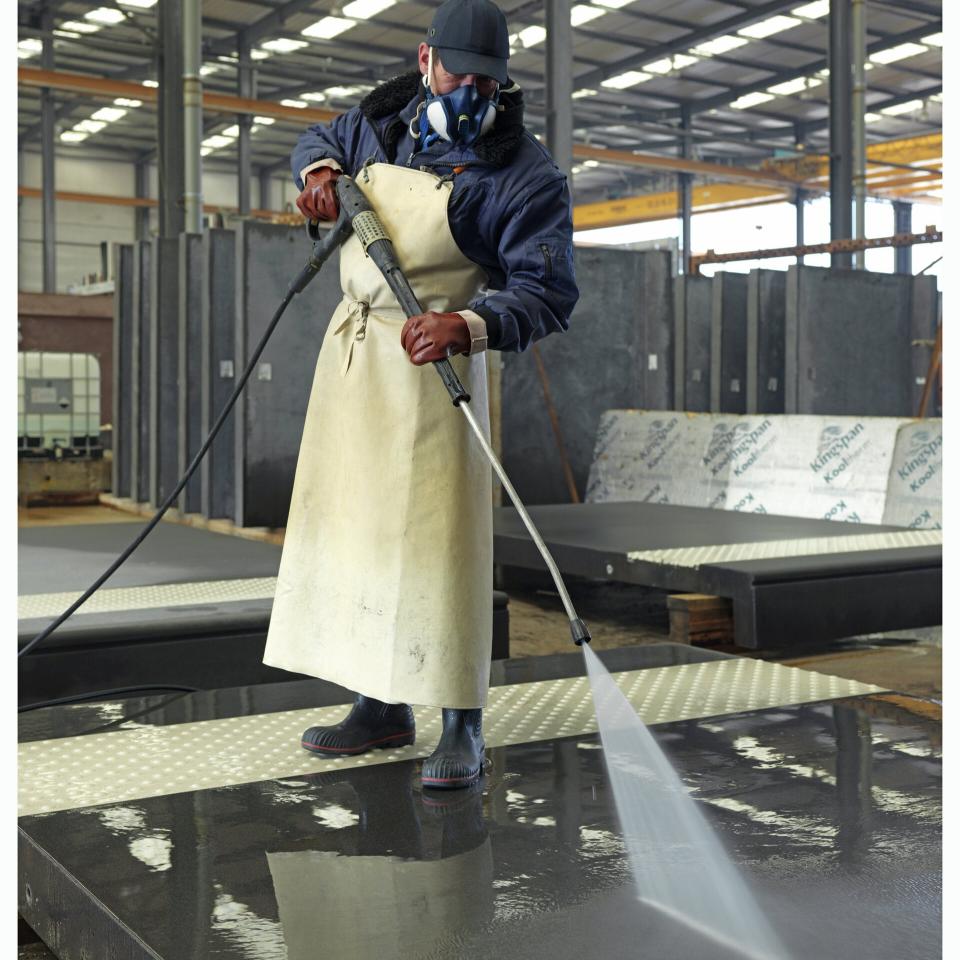Architectural concrete
Architectural concrete is a fascinating material that combines function with beauty. Its aesthetic and architectural uniqueness, combined with its structural capacity , charm both architect and builder. Concrete is durable, extremely strong and impact resistant. In addition, it has a high thermal capacity, excellent acoustic insulation and is fire resistance.
The benefits
What are the advantages of architectural concrete? As pioneers and experts, we list them here for you:
- Everything is possible thanks to the pouring of concrete in liquid form into formworks. The flexible material can be moulded perfectly to any idea.
- Free choice of function: suspended, self-supporting, single skin or sandwich panel elements.
- Saving time and costs through industrial prefabrication and assembly and by coordinating just-in-time delivery times with the client's logistical requirementss. In addition, production is not hampered by adverse weather conditions
- Durable material, resistant to environmental pollution, colourfast thanks to the use of natural granulates, easy to care for and impact resistant

Building Function
Thermal insulation
Insulated architectural concrete limits heat losses in winter and at night and creates a pleasant and fresh indoor climate in the summer. Concrete has a large heat capacity due to its high Thermal Mass and therefore an important heat retarding effect. The insulation also prevents any condensation or mould growth. A construction method with insulated concrete sandwich elements and heavy inner walls offers the advantage of a stable inner temperature compared to a light weight construction with an insulated light weight façade and light inner walls.
Acoustic insulation
Acoustic insulation is becoming more and more important and the demands of it are increasing. After all, good acoustic insulation is important for human health. Concrete is known as an excellent insulator against sound pollutions.
Water- and Air tightness
Joint sealing provides total water and air tightness. Different types of joint sealant are possible: a closed joint, a type that is frequently used, and an open or multi-stage joint. Both types require a careful application. Elastic joint sealants are kept to a minimum joint width, depending on the supporting structure.
Technical
Architectural concrete is a traditional reinforced concrete consisting of a specific composition. Decomo takes stability calculations into account at every stage of construction with concrete: during the production process, when stripping and handling, during transport and assembly and in the final state of use.
We offer solutions for architectural façade elements that can accommodate building movements due to temperature variations.
We offer solutions for architectural façade elements that can accommodate building movements due to temperature variations between interior and exterior structural elements. Outside, the concrete is constantly exposed to the climate, while inside, the temperature is usually constant. In the case of load-bearing elements, the element itself absorbs these stresses, and movements are limited by providing sufficient expansion joints
In the case of sandwich panels, the inner and outer concrete skin are connected in such a way that differential movement between the two panels is possible.
The supporting structure of the entire building can also cause movement. Façade elements follow the movement at the façade beam or floor edge. This deflection can be limited by providing the panel fixing points as close as possible to the column locations. .
Colours
Architectural concrete is available in a wide range of colours. Your creativity is given carte blanche.
Finishing
Architectural concrete is available in acidified etched, washed, grit blasted and polished finishes. The almost unlimited choice of aggregates and/or pigments ensures the aesthetic durability of the concrete. But also the incorporation of materials such as brick slips, natural stone, tiles, ceramics, etc. can give the building an extra touch.
Structured
A structured appearance may be formed by creating a ‘negative relief’ pattern on the requisite surfaces of the mould or formwork or by utilising a patterned mould liner. These liners are, generally, in the form of rubber mats incorporating either ‘off the shelf’ or custom designs and will, usually, be procured from specialist suppliers of the likes of Reckli : www.reckli.net.
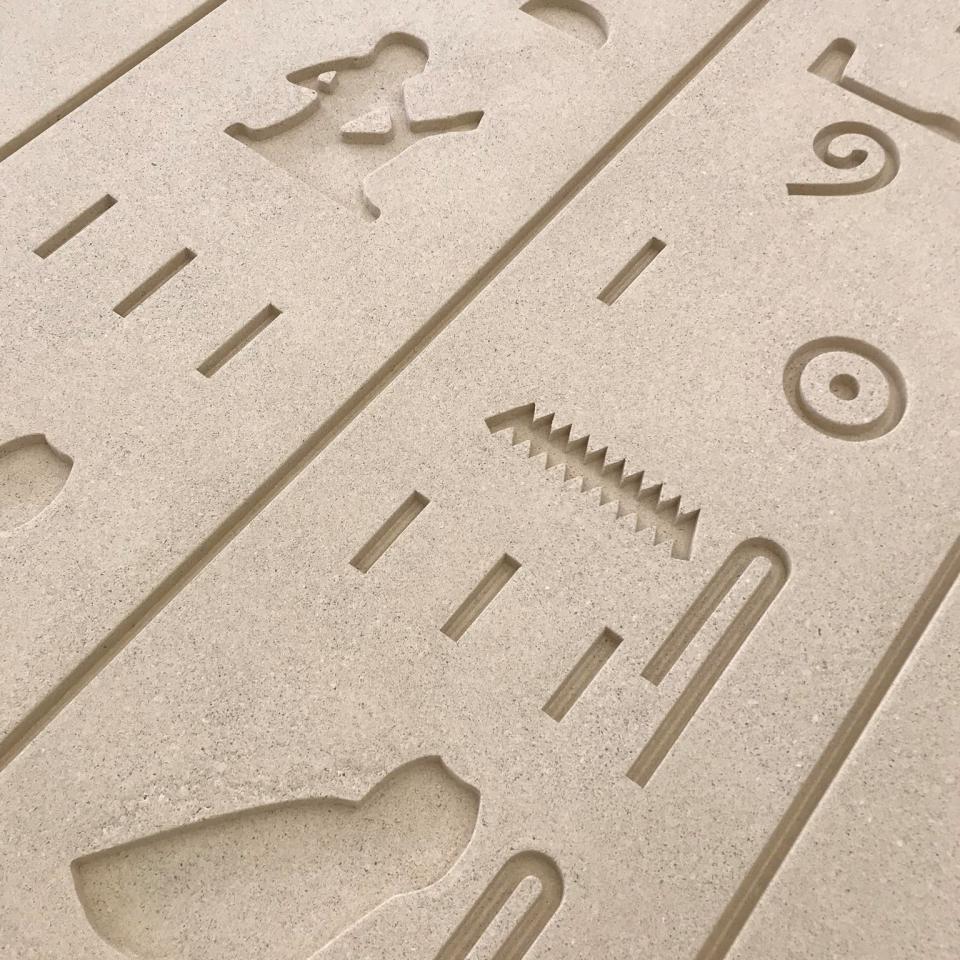
Retarded
Retarders may be applied to the mould or formwork from which an element is to be cast or may, equally, be applied, directly, onto the required surfaces of the fresh concrete.
In both situations, these surface retarders, which are also often referred to as “deactivators”, chemically delay the set of the concrete, to a controlled depth, by slowing or stopping the hydration process. The remaining depth of concrete will cure and harden normally without affecting the setting time or strength gain.
The un-hardened cement/sand matrix is removed from the surfaces by washing away with pressured water, leaving the coarser aggregates exposed.
The depth of retardation and, hence, the degree of aggregate exposure is controlled by selecting the appropriate strength of retarder.
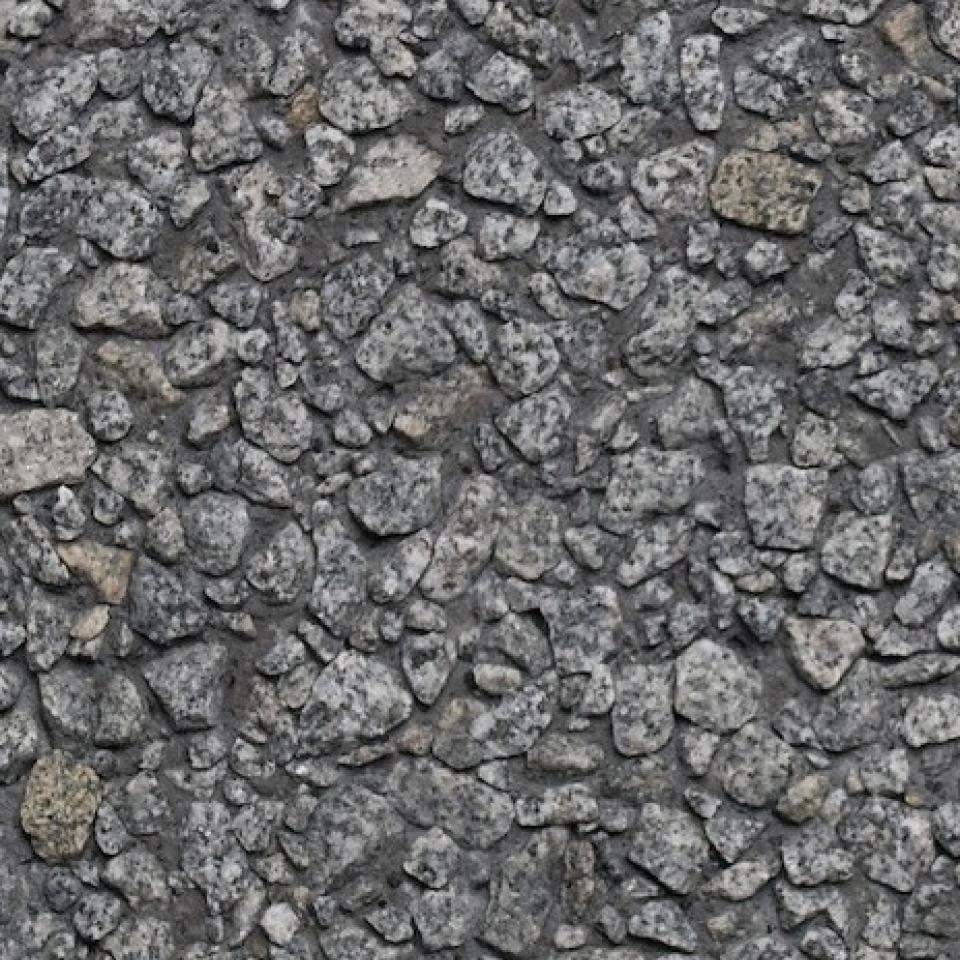
Acid Etched
This finish is produced by applying (usually by brush) a diluted solution of hydrochloric acid to the required surfaces. In some instances, it may be appropriate to apply the solution in a gel form or to even ‘dip’ the element into an ‘acid bath’. In all cases, the surfaces are thoroughly rinsed with clean water to further dilute the ‘run-off’ and to ensure no acidic residue is left.
Acid etching removes the surface laitance of the concrete and leaves a fine granular texture. The degree of texture can be varied by the length of time the solution is left before rinsing off, the strength of the solution or the number of applications.
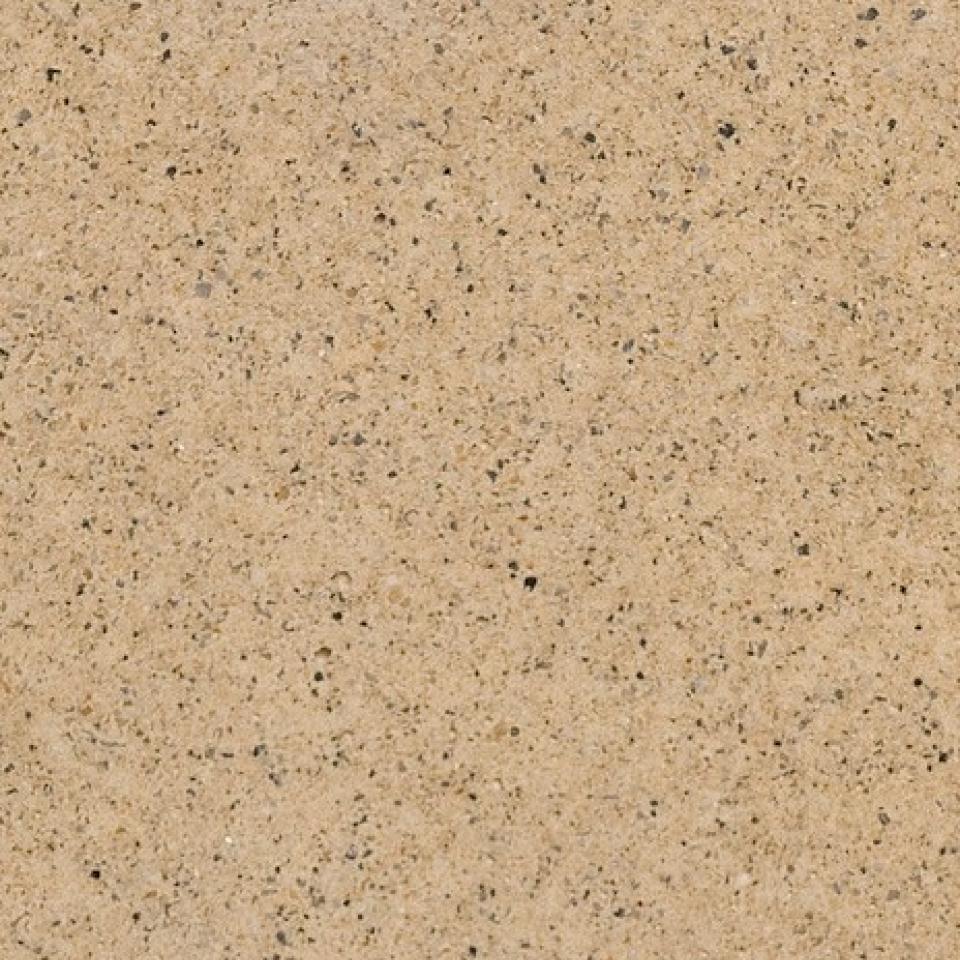
Sand or Grit Blasted
Using a high-pressured air supply to blast the required surfaces with either sand or grit particles, the surface laitance of the concrete is removed to expose the fine and/or coarse aggregates depending upon the extent of blasting.
As this is an ‘abrasive’ finishing technique, even a light blasting will still provide a rougher texture of finish than acid etching.
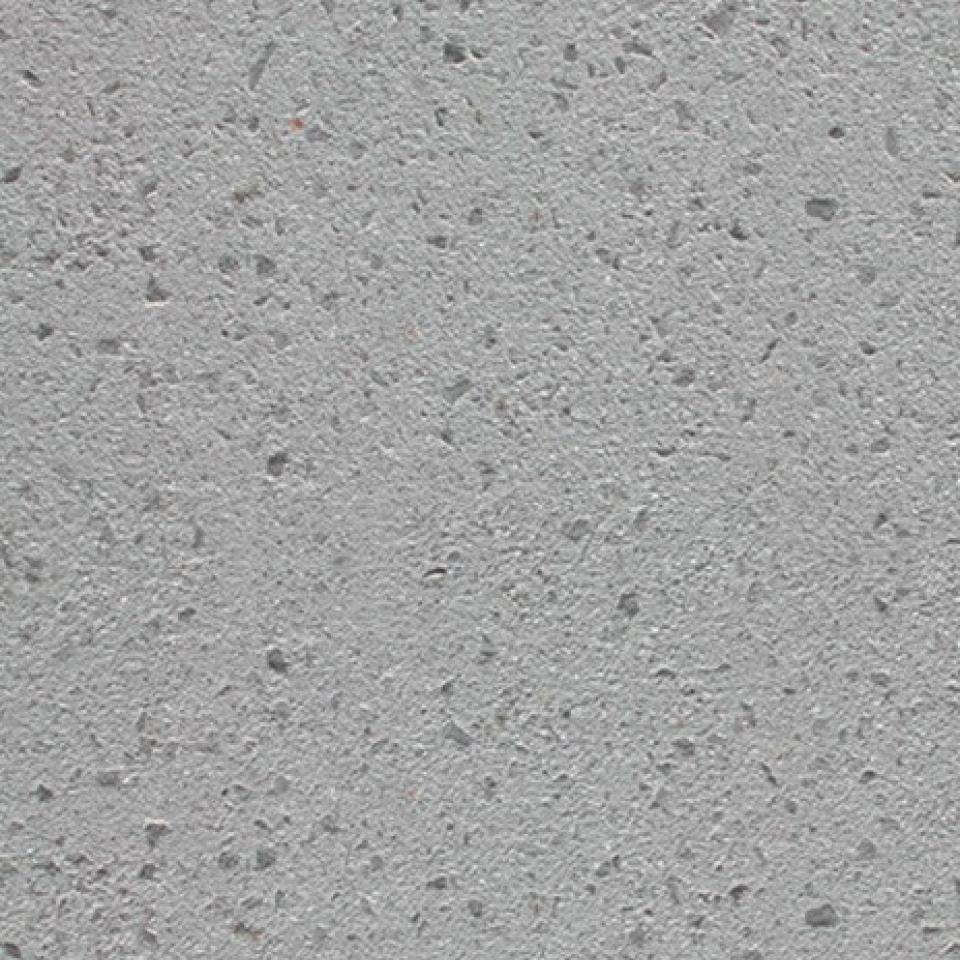
Polished/Honed
Polishing (or honing) is carried out using our ‘state of the art’ polishing machines, Whether flat panels, circular columns or, simply, irregular or intricate shapes and configurations, Decomo has the right equipment for any application.
The polishing is carried out in stages with the first ‘pass’ of the polishing head, with an ‘aggressive’ diamond tipped pad fitted, removing approximately 3mm from the surface and, essentially, cutting through the aggregates. An allowance for this ‘removal’ is made when dimensioning Production Drawings for the elements.
Subsequent ‘passes’ are made using ever finer polishing pads until the required level of sheen is achieved. A polish, similar to that used on marble, may also be applied.
For honed finishes, the number of passes are limited with the final finish remaining matt with some coarseness to the texture still being discernable.
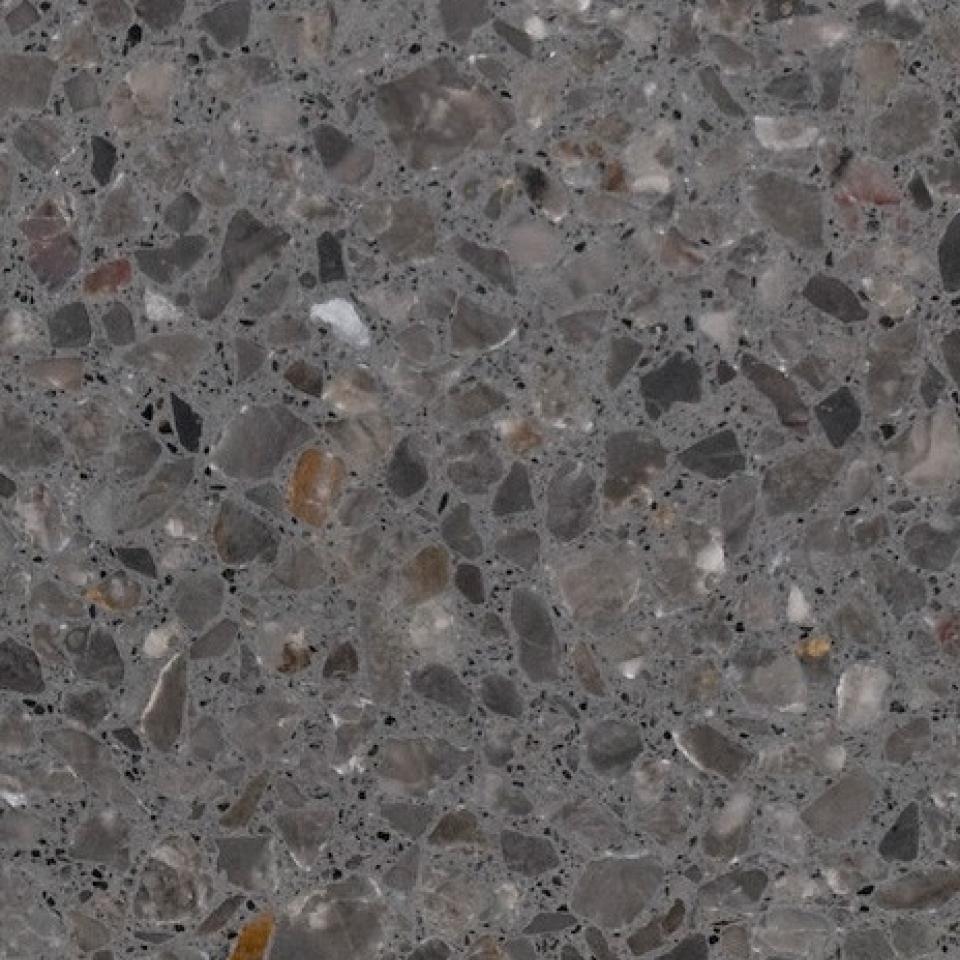
Faced
Decomo can produce elements faced with inlays of bricks, natural stone, terracotta or tiles/ceramics.
The inlays are placed ‘face outwards’ against the requisite mould surfaces and when positioned in a vertical plane will be secured through the formwork to ensure there is no movement or displacement when pouring the backing concrete. Where appropriate, ‘keys’ will either be pre-formed or cut into the rear face of the inlays or stainless steel pins may also be used.
The joints between the various forms of inlay will, generally, be post pointed with selected mortars following demoulding and any other form of finishing required.
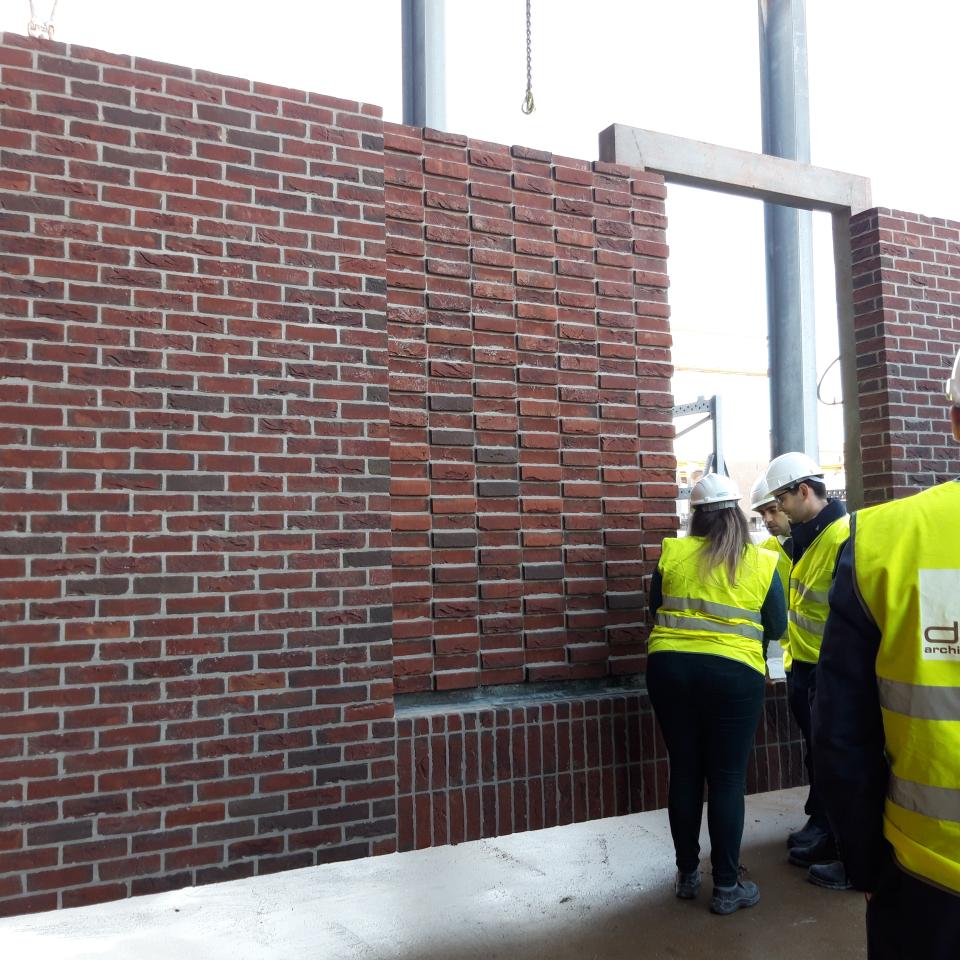
Natuursteen
Natuursteenplaten worden op de bodem van de bekisting geplaatst en zo ingebetonneerd in de elementen. Natuursteen wordt steeds voorzien van een verankering om een duurzame bevestiging te garanderen.
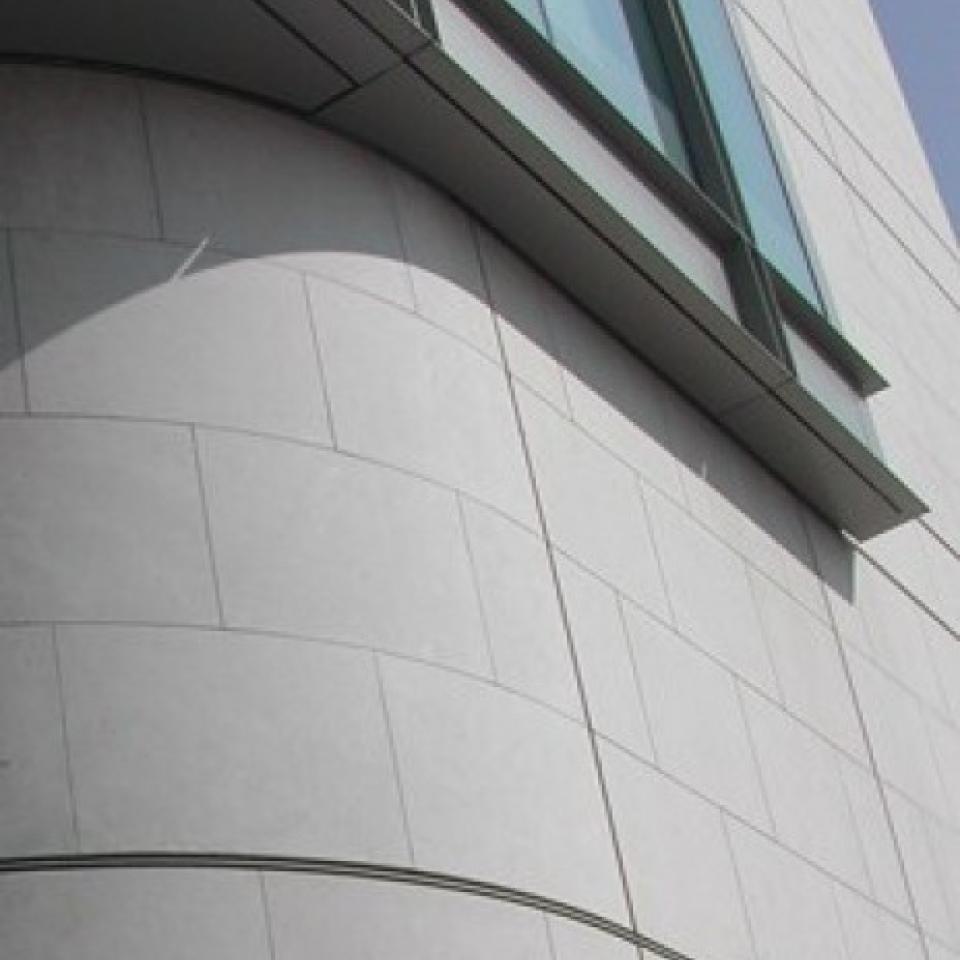
Keramiek
Keramische tegels worden in de bodem van de mal geplaatst. Indien ze op de rugzijde voorzien zijn van zwaluwstaarten worden rechtstreeks in de betonplaat gegoten. Als dit niet het geval is, of bij grote formaten, worden ze verankerd met roestvrij stalen stiften.
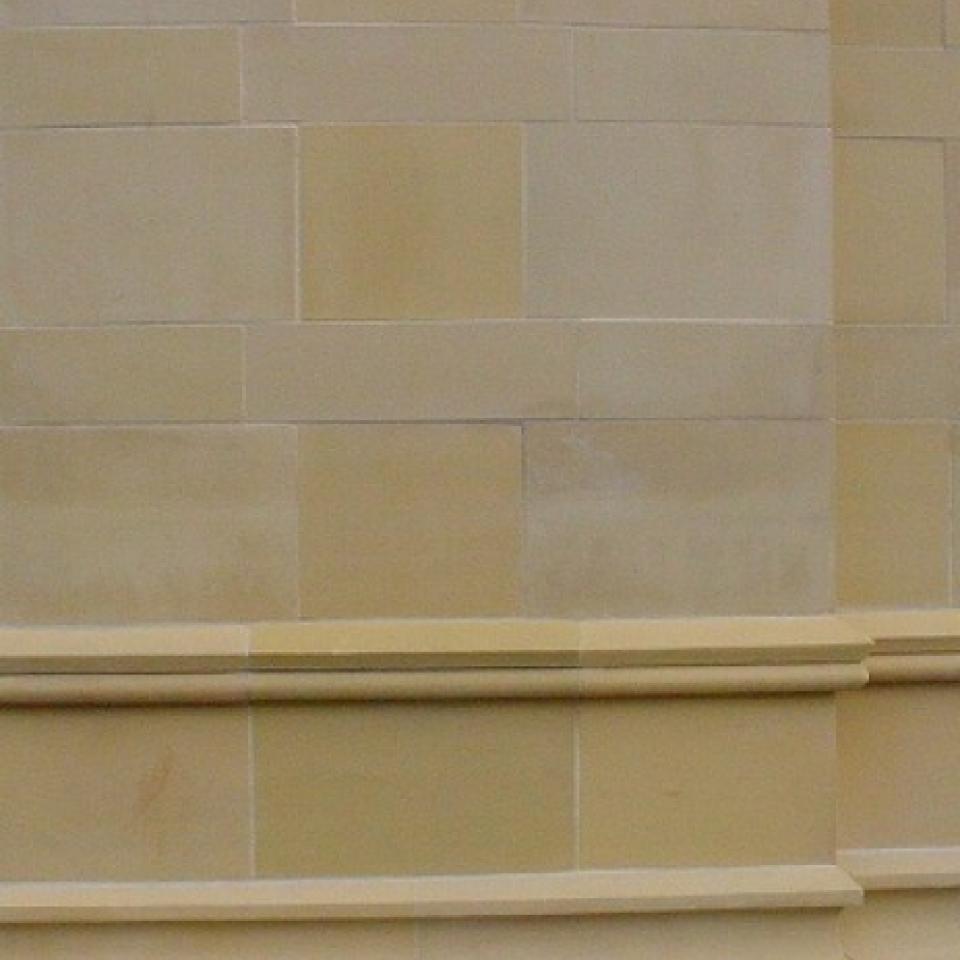
Nabehandelingen
Elk bouwmateriaal en dus ook beton kan te lijden krijgen onder vervuiling en graffiti. Specifieke aanbevelingen qua ontwerp en preventieve behandelingen geven vervuiling weinig kans. Deze nabehandelingen gebeuren door gespecialiseerde bedrijven, al dan niet aangestuurd door Decomo. Het is aan te raden alle zones te behandelen om zo onregelmatige veroudering uit de weg te gaan.
Wat graffiti betreft wordt de gevel in principe tot op ca 4 m hoogte met anti-graffiti behandeld, en vanaf 4 m met een waterafstotend product. De behandelingen zijn zo neutraal mogelijk om verkleuring te vermijden. De gevel kan nog steeds vervuilen, maar de reinigingskosten zullen beperkt blijven.
Men kan opteren voor:
- Permanente anti-graffiti: na verwijdering van de graffiti met een oplosmiddel behoudt de laag alle beschermende eigenschappen;
- Niet permanente anti-graffiti: na verwijdering van de graffiti met een oplosmiddel dient plaatselijk opnieuw anti-graffiti aangebracht te worden.
